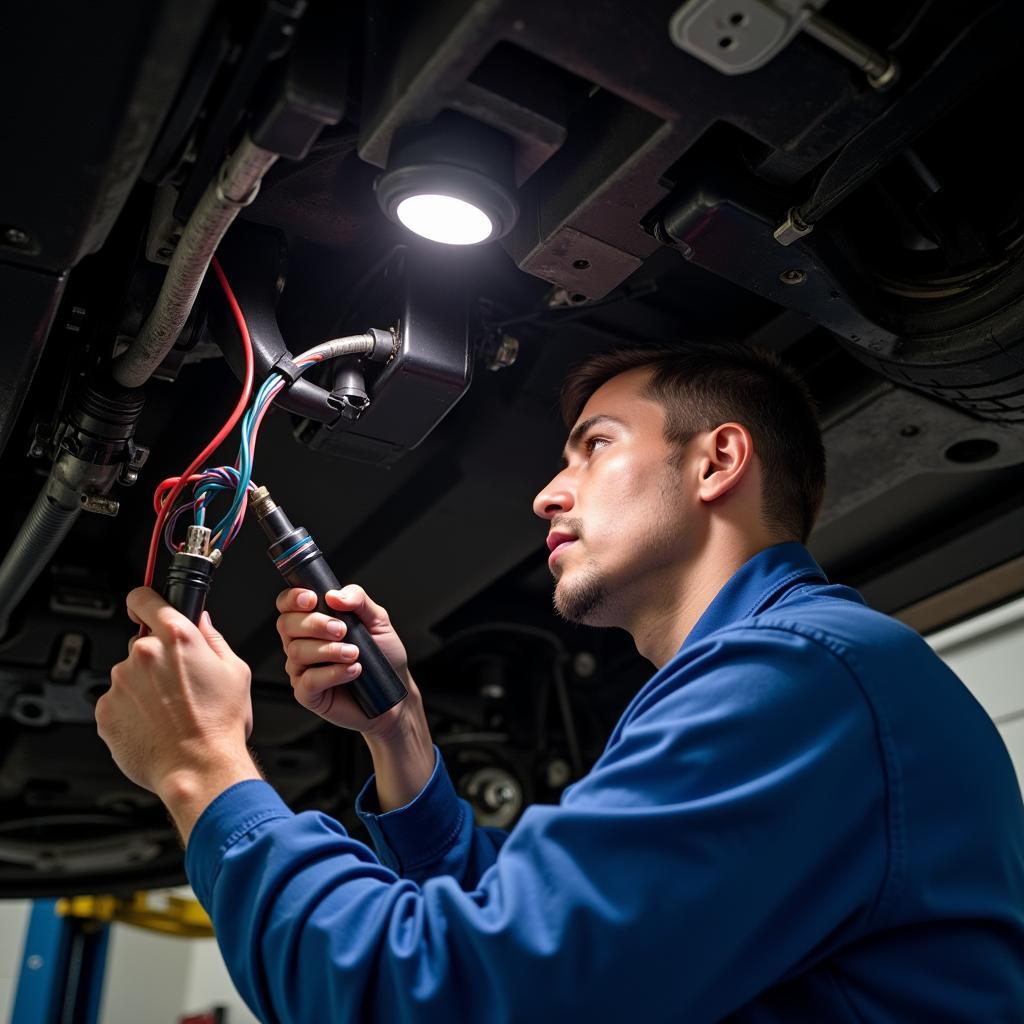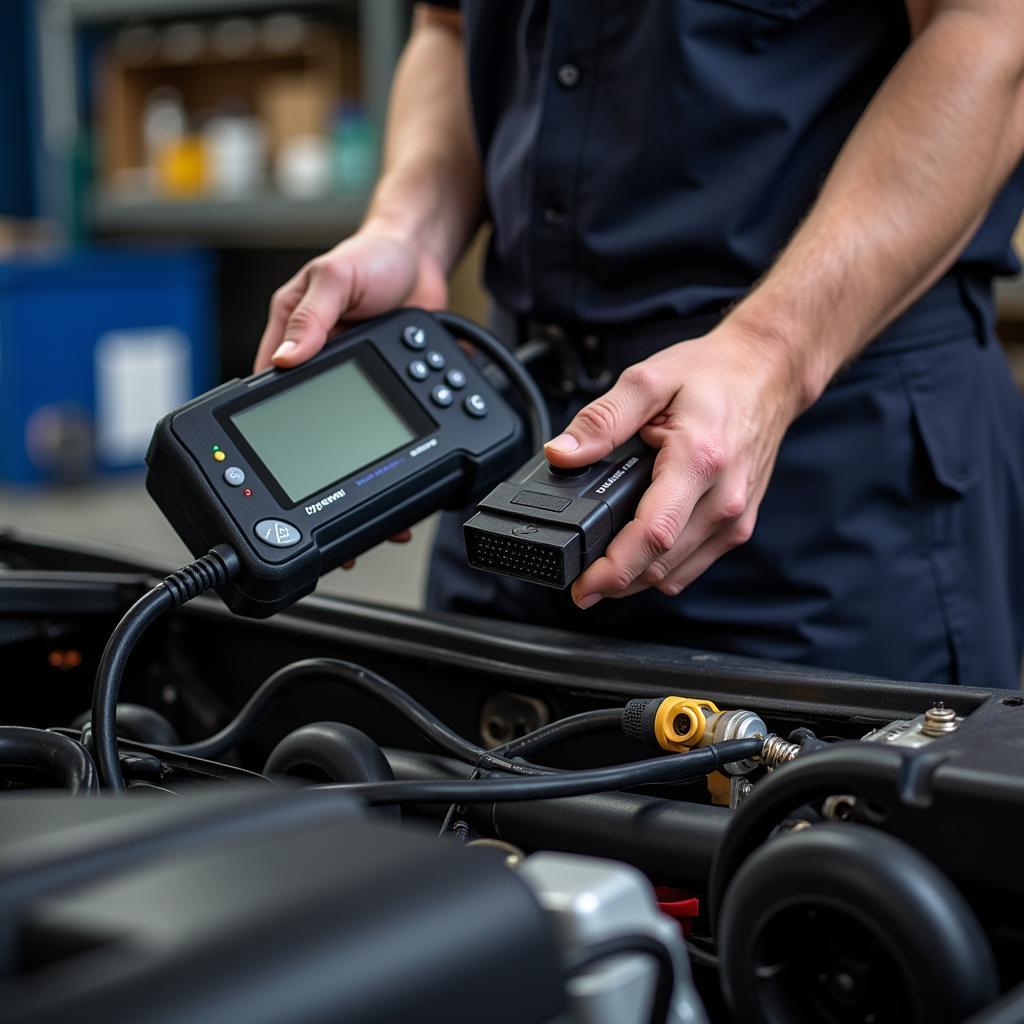Imagine this: you’re driving down the road, and suddenly, your dashboard lights up like a Christmas tree. You’ve got the ABS light, the brake warning light, the 4×4 indicator, and maybe even the tire pressure sensor light glaring back at you. Panic might set in, but don’t worry! We’re here to guide you through this common automotive headache. This article dives into why these warning lights decide to have a party on your dashboard and, more importantly, how to get them to leave.
Understanding Your Vehicle’s Warning System
Your car’s warning lights are like its own language, communicating potential issues before they escalate. While seeing multiple lights illuminate simultaneously might seem daunting, it’s actually your vehicle’s way of giving you a more precise diagnostic. Let’s break down what each light signifies:
- ABS (Anti-lock Braking System) light: This light indicates a potential problem with your ABS, which prevents wheel lockup during hard braking.
- Brake warning light: This light signals an issue with your traditional braking system, such as low brake fluid or worn brake pads.
- 4×4 indicator: If your vehicle is equipped with four-wheel drive, this light illuminates when the system is engaged. However, if it blinks or stays on when not in 4×4 mode, it signals a problem.
- Tire pressure sensor (TPMS) light: This light warns of underinflation in one or more tires.
Common Culprits Behind the Light Show
Now that you understand what each light represents, let’s look at the usual suspects that cause them to illuminate together:
1. Faulty Wheel Speed Sensor
One of the most frequent culprits is a malfunctioning wheel speed sensor. These sensors, often integrated with the ABS system, relay information about wheel speed to the vehicle’s computer. A faulty sensor can disrupt multiple systems, triggering the ABS, 4×4, and even traction control warnings.
2. Low Brake Fluid
Low brake fluid is another common cause, potentially triggering both the ABS and brake warning lights. Brake fluid is the lifeblood of your braking system, and a leak or low fluid level significantly compromises braking performance.
3. ABS Module Issues
The ABS module is the brain behind your anti-lock braking system. A failing module can disrupt the entire system and trigger multiple warning lights, including those related to traction control and stability control.
4. Wiring Problems
The intricate web of wiring connecting your vehicle’s various systems can be susceptible to damage, corrosion, or loose connections. Wiring issues can disrupt communication between the sensors, modules, and warning lights, leading to a symphony of illumination on your dashboard.
 Mechanic Inspecting Car Wiring Harness
Mechanic Inspecting Car Wiring Harness
Troubleshooting Steps and Solutions
Before you panic and call for a tow truck, there are a few troubleshooting steps you can take:
-
Check Your Tire Pressure: It might seem too simple, but begin by checking your tire pressure. Underinflated tires can trigger the TPMS light and, in some cases, even affect the ABS system.
-
Inspect Your Brake Fluid: Locate your brake fluid reservoir (refer to your owner’s manual) and check the fluid level. If it’s low, adding the correct type of brake fluid might do the trick. However, if the fluid level is consistently low, it indicates a leak that requires immediate professional attention.
-
Visual Inspection: Open your hood and perform a visual inspection of the wiring connected to your ABS module, wheel speed sensors, and brake system. Look for any signs of damage, corrosion, or loose connections. If you’re comfortable with basic repairs, you can try cleaning connections or tightening loose wires.
Expert Insight from Mark Stevenson, ASE Certified Master Technician: “Never underestimate the power of a visual inspection! Oftentimes, a simple loose connection or a frayed wire is the root cause of multiple warning lights. Just remember, safety first! If you’re unsure about anything, it’s always best to consult a professional.”
- Diagnostic Scan: If the basic checks don’t resolve the issue, it’s time for a more in-depth diagnosis. A professional automotive scanner can read the error codes stored in your vehicle’s computer, providing valuable insight into the root cause of the problem.
 Car Undergoing Diagnostic Scan
Car Undergoing Diagnostic Scan
The Remote Diagnostic and Programming Advantage
In today’s technologically advanced world, remote diagnostics and programming have emerged as game-changers in the automotive repair industry. Services like mine allow expert technicians to access and diagnose your vehicle’s computer systems remotely, pinpoint the issue, and even reprogram certain modules – all without you having to leave your home!
Expert Insight from Mark Stevenson, ASE Certified Master Technician: “Remote diagnostics and programming have revolutionized how we approach vehicle repairs. It’s incredibly efficient, often saving time and money compared to traditional methods. Plus, it gives vehicle owners peace of mind knowing they’re getting expert assistance from the comfort of their homes.”
Don’t Ignore the Warning Signs
Remember, your vehicle’s warning lights are there to keep you safe. Ignoring them can lead to more significant problems and costly repairs down the road.
By understanding what each light means, performing some basic troubleshooting, and seeking professional help when needed, you can confidently navigate the sometimes-confusing world of automotive warning lights and get back on the road safely.

